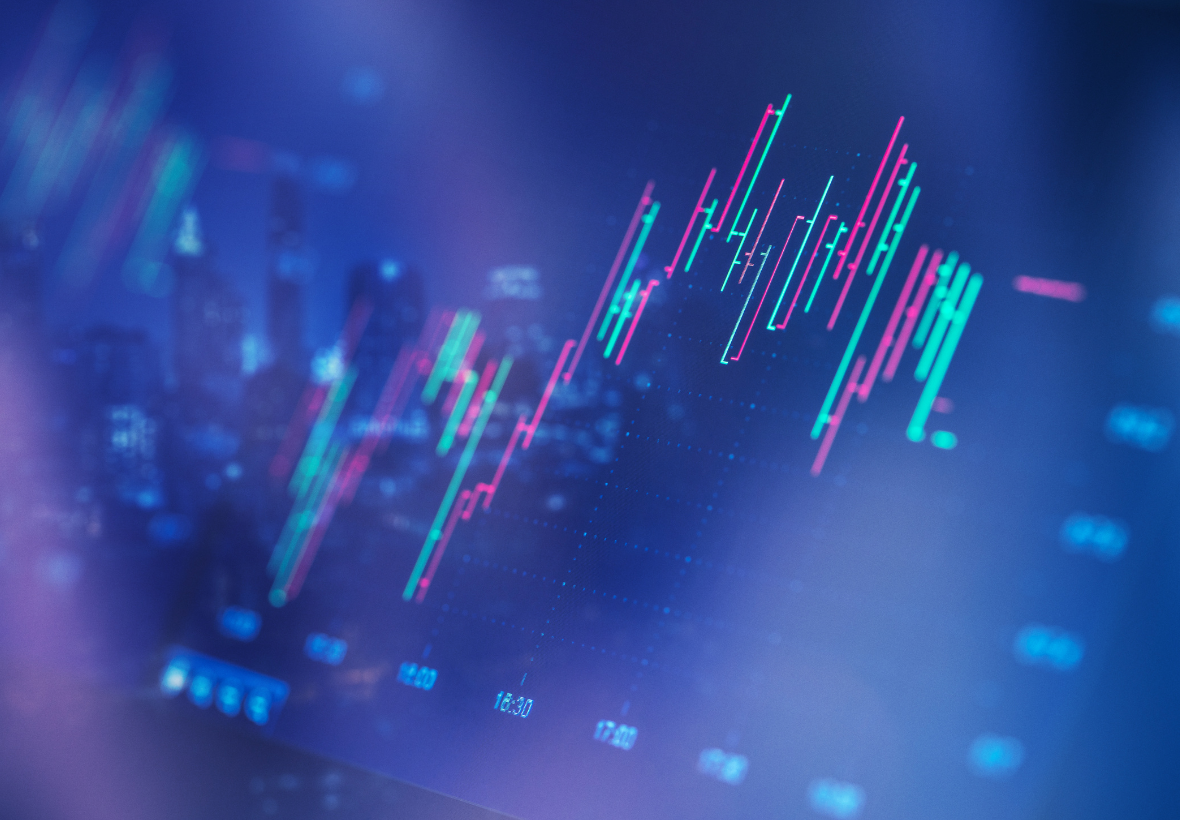The trading bot has emerged as a powerful tool for investors and traders. These automated systems are designed to execute trades on behalf of users, leveraging advanced algorithms to analyze market data, identify opportunities, and make decisions based on predefined rules. We will explore the fascinating world of trading bots, understanding their functionality, benefits, and potential risks.
Conception Trading Bots
Trading bots, also known as automated trading systems or algorithmic trading software, are computer programs that execute trades in financial markets without human intervention. These bots operate based on predefined rules and parameters set by traders or developers. By automating the trading process, bots can rapidly analyze vast amounts of market data and execute trades in real-time, taking advantage of even the smallest price differentials.
Types of Trading Bots
1. Trend-Following Bots
- Trend-following bots are designed to identify and capitalize on market trends. These bots analyze historical price data and technical indicators to determine the direction of the market. When a trend is identified, the bot will initiate trades in the same direction as the trend, aiming to ride the momentum for maximum profit.
2. Arbitrage Bots
- Arbitrage bots exploit price differences between different markets or exchanges. These bots monitor multiple platforms simultaneously and execute trades to take advantage of temporary price discrepancies. By buying low and selling high, arbitrage bots can generate profits with minimal risk.
3. Market-Making Bots
- Market-making bots provide liquidity to the market by placing limit orders on both the buy and sell sides. These bots aim to profit from the bid-ask spread, the difference between the highest price a buyer is willing to pay and the lowest price a seller is willing to accept. Market-making bots play a crucial role in ensuring smooth market operations.
4. Mean Reversion Bots
- Mean reversion bots operate on the principle that prices tend to revert to their mean or average value over time. These bots identify instances where the price has deviated significantly from its average and execute trades to take advantage of the expected reversal. Mean reversion bots are commonly used in range-bound markets.
How Trading Bots Work
- Data Collection and Analysis – Trading bots rely on accurate and timely market data to make informed trading decisions. These bots continuously collect data from various sources, such as price feeds, order books, news releases, and social media sentiment. Advanced data analysis techniques, including statistical models and machine learning algorithms, are employed to identify patterns and potential trading opportunities.
- Strategy Development – Traders or developers define the trading strategies and rules that the bots will follow. These strategies can be based on technical indicators, fundamental analysis, or a combination of both. The bots are programmed to interpret the collected data, apply the defined strategies, and generate signals to initiate trades.
- Trade Execution – Once a trading signal is generated, the bot executes the trade automatically. Depending on the strategy, the bot may place market orders or limit orders to buy or sell assets. The trade execution is typically done through APIs (Application Programming Interfaces) provided by cryptocurrency exchanges or brokerage platforms.
- Risk Management – Trading bots employ risk management techniques to protect the trader’s capital. These techniques may include setting stop-loss orders to limit potential losses, adjusting position sizes based on market conditions, or implementing trailing stop orders to secure profits as the market moves in favor of the trade.
Advantages of Using Trading Bots
1. Speed and Efficiency
One of the significant advantages of trading bots is their ability to execute trades at high speeds. Bots can analyze market data, generate trading signals, and execute orders in a matter of milliseconds, much faster than any human trader. This speed and efficiency can be crucial in capturing fleeting market opportunities.
2. Elimination of Emotional Bias
Emotions can significantly impact trading decisions, often leading to irrational choices. Trading bots eliminate emotional bias from the trading process, as they operate solely based on predefined rules and algorithms. By removing human emotions, bots can make objective decisions and stick to the trading plan consistently.
3. Diversification and Market Coverage
When it comes to investing, diversification and market coverage play vital roles in managing risk and maximizing potential returns. By spreading investments across different asset classes, sectors, and geographic regions, investors can reduce their exposure to any single investment and take advantage of various market opportunities. In this article, we will explore the concepts of diversification and market coverage, understanding their importance and how they contribute to a well-rounded investment strategy.
3.1. Diversification
Diversification is the practice of allocating investments across different assets to reduce risk. It is based on the principle that not all investments perform the same way under different market conditions. By diversifying, investors aim to create a portfolio that can withstand fluctuations in specific assets or sectors.
Table: Diversification vs. Concentration
|
Diversification |
Concentration |
|
Spreading investments across different assets, sectors, and regions. |
Concentrating investments in a single asset, sector, or region. |
|
Reduces risk by minimizing the impact of negative events on the portfolio. |
Increases risk as the portfolio is heavily reliant on the performance of a single investment. |
|
Provides opportunities for potential growth in multiple areas. |
Limits growth potential to the performance of a single investment. |
|
Helps achieve a balance between risk and reward. |
Carries higher risk due to lack of diversification. |
Diversification can be achieved in various ways:
- Asset Allocation: Allocating investments across different asset classes, such as stocks, bonds, real estate, and commodities. This helps balance risk and potential returns based on the investor’s risk tolerance and investment goals.
- Sector Diversification: Investing in different sectors or industries, such as technology, healthcare, finance, and consumer goods. This spreads the risk associated with specific sectors and reduces the impact of sector-specific downturns.
- Geographic Diversification: Expanding investments across different countries or regions. This helps mitigate the risk of adverse events in a particular region and takes advantage of growth opportunities in different economies.
- It involves identifying and capitalizing on opportunities in different market segments, including domestic and international markets.
Table: Local vs. Global Market Coverage
|
Local Market Coverage |
Global Market Coverage |
|
Focuses on investments within the investor’s domestic market. |
Expands investments to include international markets. |
|
Provides exposure to local economic conditions and market trends. |
Offers diversification benefits by tapping into different economies and currencies. |
|
Limited exposure to global growth opportunities. |
Access to a wider range of investment options and potential high-growth markets. |
|
Higher correlation with domestic market performance. |
Lower correlation with domestic market performance, potentially reducing portfolio volatility. |
By embracing global market coverage, investors can access a more extensive range of investment opportunities, including emerging markets with significant growth potential. This diversification across markets can help reduce the impact of localized economic downturns and regulatory changes.
It’s important to note that market coverage requires careful analysis and understanding of international markets, including factors such as currency risk, geopolitical considerations, and regulatory frameworks. Investors may choose to invest directly in foreign markets or use exchange-traded funds (ETFs) and mutual funds that provide exposure to international markets.
4. Backtesting and Optimization
Trading bots enable traders to backtest their strategies using historical market data. By simulating trades and analyzing past performance, traders can evaluate the effectiveness of their strategies before deploying them in live trading. Bots also allow for strategy optimization, fine-tuning parameters for optimal results.
Risks and Considerations
Technical Failures
Trading bots are reliant on technology, and technical failures can occur. Network outages, system crashes, or API malfunctions can disrupt bot operations and potentially result in losses. It is crucial to have contingency plans in place and regularly monitor bot performance to mitigate these risks.
Market Volatility
While trading bots can exploit market volatility, excessive volatility can also pose risks. Rapid price fluctuations or sudden market movements may lead to unexpected losses if the bots’ risk management mechanisms are not adequately calibrated. Traders must set appropriate risk parameters and monitor market conditions closely.
Over-Optimization
Over-optimization occurs when a trading strategy is excessively tailored to historical data, resulting in poor performance in live trading. It is essential to strike a balance between capturing historical trends and adapting to changing market conditions. Regular monitoring and periodic strategy adjustments are necessary to avoid over-optimization.
Regulatory Challenges
The use of trading bots may be subject to regulatory requirements in certain jurisdictions. Traders and developers should be aware of the legal and compliance obligations related to algorithmic trading. It is advisable to consult with legal and financial professionals to ensure adherence to applicable regulations.
The Future of Trading Bots
The development of trading bots is an ongoing process, driven by advancements in technology and data analysis. In the future, we can expect more sophisticated bots powered by artificial intelligence and machine learning algorithms. These bots may incorporate natural language processing to analyze news sentiment and social media trends, further enhancing their decision-making capabilities.




Leave a Reply